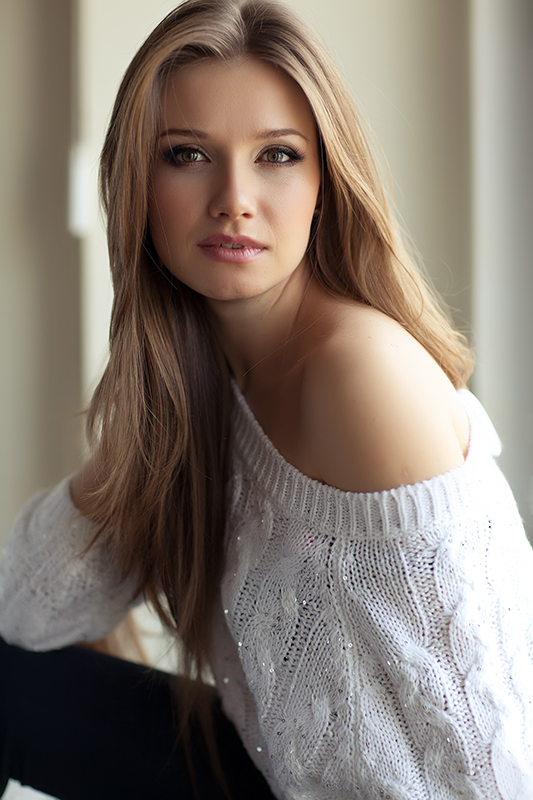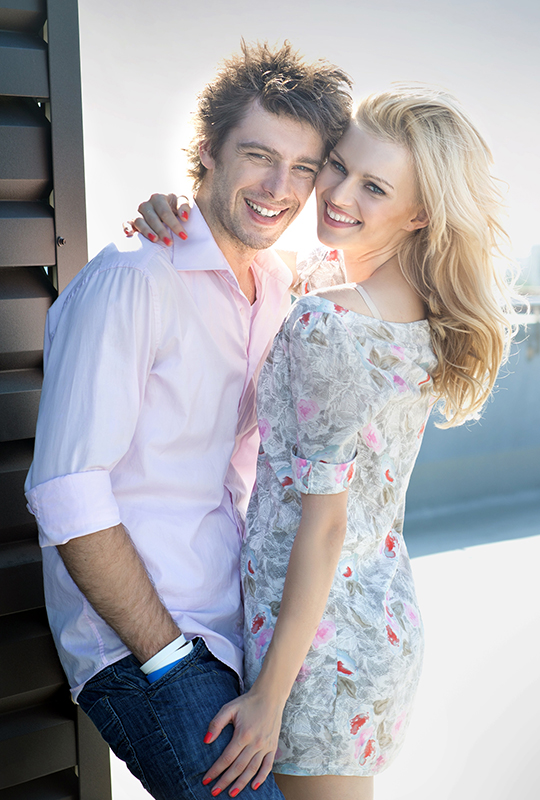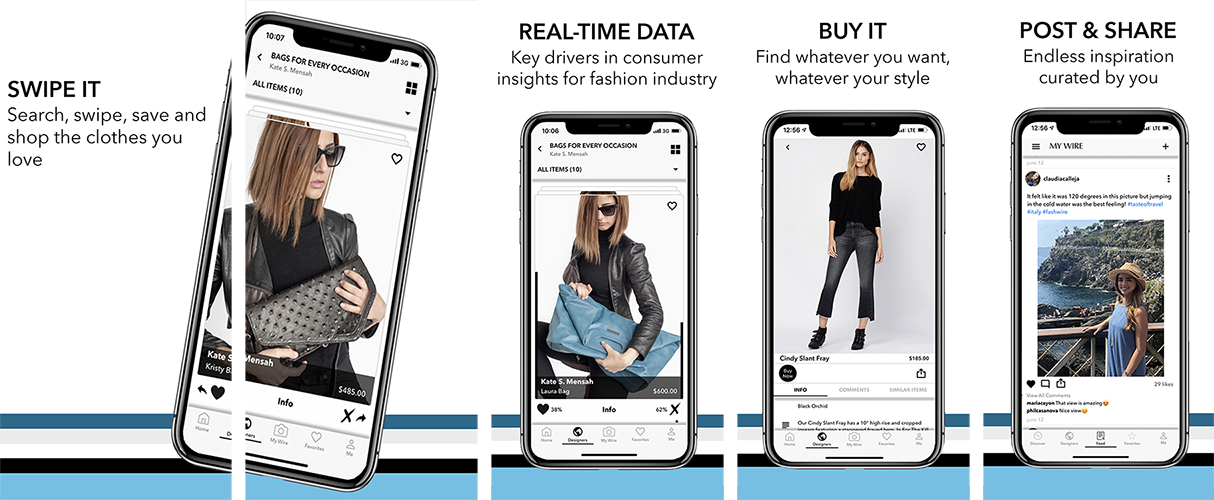
FASHTALKS WITH ANNTARAH
Designer Interview
Jan 05, 2024 10:50 AM
What is your earliest design memory for your brand?
My earliest design memory comes from my childhood. Since I was a little girl, I liked to knit clothes for my dolls, I learned this at school. At the same time, I also discovered my social sensitivity. I always asked my mother to bring all the poor children to my birthday party and asked her why there were children on the street begging. So, I think my social feelings have been there all my life. Finally, and through Anntarah, I can say that I realized my dreams as a designer and at the same time my social vocation to generate better opportunities for poor families in the Peruvian highlands.
When did you know you wanted to become a designer?
I knew from the beginning since I believed in the potential I had, and the potential of the people who are now my right hand. Feeling able to make a difference, a social change, this was a powerful engine for us, starting in a challenging environment, but with passion, empowerment, and with the intention of creating a support network for all the people whom we started working with. For us, identifying the specific problems of the community and designing creative solutions was a great source of inspiration, we saw that by creating this business we could contribute to this social change by creating opportunities for other women and fostering social development in the community.
When was your first industry experience and how did it impact you?
My first experience in the industry was at my first job. I worked for 10 years in a company that transformed alpaca fiber into yarn. When I worked there, I discovered that this was the sector to which I wanted to dedicate my whole life. I also met the artisans, the breeders, the Alpacas, and the Peruvian cotton farms. I felt very happy not only because of the beauty of the material but above all because of what it means for the thousands of people involved in the transformation process.
“Anntarah represents the connection from the heart with our ancestral culture harmoniously and elegantly in each of our designs.”
Where do you find inspiration?
I found a great source of inspiration in knowing that we could design creative solutions to social problems that we could identify very closely, and because 73% of women in the Peruvian highlands have no financial autonomy and because Peruvian fibers such as alpaca and organic cotton are among the finest in the world, which the world has not heard about it.
Anntarah was born to pay homage to women, the artisan women who inspire us day by day, with their wonderful hands and their ancestral weaving techniques, who not only turn threads into garments but also weave their future and the future of their families, women who want to leave their mark and we, with Anntarah, are here to accompany them.
How would you describe the style of your brand?
Our brand aims to have a unique and timeless design using the best natural fibers of Peru. We create pieces that follow the latest trends and represent the different types of female bodies. We have clean and structured silhouettes; the cuts are precise and flattering, elegantly highlighting the figure.
We classify Anntarah’s style with casual garments, perfectly cut coats, elegant capes, sweaters, and cardigans characterized by impeccable construction and creative trims. Chic, meticulous, and clean, all thanks to skillful and precise construction.
Classic garments, with modern jackets and cozy cardigans, exude sophisticated urban style, showcasing dynamic lines and clean details.
Ethnic garments with classic cut coats, wrap ponchos, and elegant cardigans and sweaters are characterized by the use of stylized pre-Columbian iconography and organic lines that work together to create a folksy yet ultra-chic look.
Anntarah incorporates carefully designed details, with a focus on simplicity and innovative designs, these details may include strategic stitching, asymmetrical cuts, or subtle embellishments that add a touch of elegance and visual interest. We highly value the craftswomen's weaving and attention to detail in the making of their garments. This is reflected in the quality of the stitching and the impeccable execution of each garment.
Versatility is an important characteristic of Anntarah's style. The garments are often versatile and suitable for a variety of occasions, from formal events to more casual occasions.
What inspired you to name your brand?
The harmonious sound of the Peruvian Andean flute, which represents our ancestral culture accompanied by an elegant and harmonious sound, Anntarah also represents the connection with the heart. Finally, I consider that Anntarah represents the connection from the heart with our ancestral culture harmoniously and elegantly in each of our designs.
What did the beginnings of Anntarah look like?
I could say it was a group of dreamers who shared the same motivation and a clear vision of offering beautiful garments for a buyer who wants to wear stylish, comfortable, and modern clothes while caring about what is behind the label, the use of the best natural materials, and the impact they make with their purchase to people and the planet.
What brand values are most important for Anntarah?
The most important values of the brand are empowering women, giving value to alpaca and organic cotton, social responsibility, and ethical design.
What was the toughest circumstance you overcame when just starting your business?
In the beginning, everything was difficult, but my vision was strong. It was difficult to reach production minimums and at the same time be competitive. Also, it was hard to grow due to the lack of financing without warranties, so it grew with high-interest rates. Finally, I think there is a period where you need to demonstrate consistency and sustainability in your proposition to customers and how strong your proposition is, that only happens over time.
How does sustainability play a role in your brand? What sustainable measures has Anntarah taken to better the environment?
Training and generating jobs for women in the highlands of Peru who do not have employment opportunities and using natural fibers such as alpaca fiber and organic cotton.
Alpacas are gentle with the land. Alpacas do not damage the pasture while grazing. They nibble only the tops of grasses and plants; they do not rip plants out of the ground, resulting in less disturbance of the vegetation and allowing it to grow black. Alpaca feet do not damage the pasture. In contrast to goats and sheep, which have sharp hooves that damage pastures and soil, alpacas have two toes with toenails on top and a soft pad on the bottom of each foot that minimizes their impact on pastureland. In other words, the grass system is not disturbed by alpacas, allowing the soil and their habitat to remain intact.
Alpacas do not use the land or water destined for food production. The natural habitat of alpacas is about 3,800 meters above sea level. At this altitude, the water supply is natural, and the land is generally not suitable for agriculture. This makes alpacas more environmentally friendly than all other fiber-producing livestock that often contribute significantly to serious environmental problems.
Alpacas are highly efficient animals. The efficiency of alpacas is especially notable considering that they require much less food intake than most other fiber-producing livestock. Cashmere goats, for example, require at least two times the amount of dry grass that alpacas need to produce 1 kg of clean fiber.
Organic cotton is softer, more durable, and more breathable than conventional cotton. In addition, because no toxic chemicals are used in its production, organic cotton is less irritating to sensitive skin and less likely to cause allergies.
How has the fashion industry changed since you first started?
I believe a major shift has taken place as environmental awareness has increased, there has been growing concern about the negative effects of fast fashion on the environment and labor rights. As a result, there has been an increased emphasis on sustainability in the fashion industry.
Brands and runways have also broadened their focus to include models of different ethnic backgrounds, genders, ages, and sizes. This has led to greater inclusion and acceptance of diversity in fashion.
On the other hand, we have experienced a huge shift and growth in e-commerce, which has grown exponentially in the fashion industry. Online stores and fashion platforms have become increasingly popular, which has changed the way people shop for clothing and accessories. In addition, the rise of social media has influenced shopping trends.
What is one piece of advice you would give to a new designer?
Find the passion and love of their idea, that is the bigger tool to overcome all the problems on the way and to always act with values and thinking about the impact each brand can have on people and the planet.
“Anntarah is able to offer modern, innovative designs each time, working with great detail to create pieces that follow the latest trends and represent all types of female bodies, making each day special for each person who wears Anntarah garments.”
What sets your brand apart from the rest?
Anntarah differs from other brands, mainly because of the unique and innovative design we offer, working only with natural fibers, and respect for the values and brand philosophy that makes us overcome any obstacle following the same mission over the years.
What has been your biggest accomplishment to date?
One for sure was surviving the pandemic in good health, with my entire team! Also, to have recovered the large losses we had generated due to the pandemic. And finally, to continue with our values and dreams. Our clear vision is to prove that textiles and fashion are a strong way to change people's lives and generate great impacts.
What do you envision for the future of your brand?
I see Anntarah conquering the big fashion markets, being a brand that comes from Peru to the world, generating more sustainable work for all involved, leaving high the name of Peru, and recognizing the work of all the artisans who are a fundamental part and inspiration for our growth.
What is the most important thing you would like your brand to be recognized for?
I would like Anntarah to be recognized for the great social work it has done over the years, for the innovative design we offer, and for being a brand that has shown that the textile industry if focused correctly, can change the lives of many people and generate a great environmental change.
What should customers expect to see next from Anntarah?
Anntarah is able to offer modern, innovative designs each time, working with great detail to create pieces that follow the latest trends and represent all types of female bodies, making each day special for each person who wears Anntarah garments. Continuing with the hard work of social sustainability and making more and more changes and developments in society.




